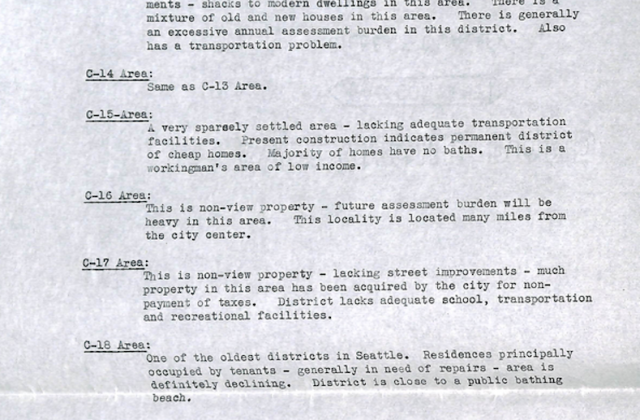Trends to Watch in 2017: An Upsurge of Identity Politics
Something to watch unfold this year in Seattle as we try to work on the housing shortage which is leading to higher prices, is an upsurge of identity politics associated with housing. As a person of color (or POC as we’re called) I am concerned about the growing role that race is taking in our efforts to deal with the obvious problem of not having enough housing choice in Seattle. And it seems that with the election of Donald Trump, this phenomenon is getting worse as local politicians try to make big statements locally to somehow fend off national trends. Lets look at some examples.
First, the selection of Rebecca Saldana as state senator. Saldana is a smart and dedicated advocate having worked for years for Puget Sound Sage, and organization that is largely supported by labor unions. Saldana’s group published a report a few years back about race, economics, and the effects of light rail on the Rainier Valley. I took strong exception to one conclusion that was in the report. Here’s what I wrote in Crosscut:
The [report’s] emphasis on proportion leads to this shocking statement in the report:
“Southeast Seattle neighborhoods should remain majority people of color.”
I say it’s shocking because what if a report was published that said this:
“Northeast Seattle neighborhoods should remain majority white people.”
I met later with Saldana who didn’t like the article I wrote and a follow up television interview I did. I told her that she simply must revise the report. The implications of the statement are problematic for a few reasons. First, how would such a policy be implemented. Would we seriously survey and census certain parts of the city and push for racial quotas? Second, why would we want to do such a thing? And even if we could figure out how to do this, what would be the benefit? Would we really want a codified racial segregation?
Saldana refused to promise to revise the statement into something resembling an actual policy statement rooted in some data. So there it remains, a clear advocacy for a higher ratio of people of color to white people in a Seattle neighborhood. And when I asked current City Councilmember Lorena Gonzalez to disavow this in a public forum, she flatly refused, instead saying, “no ethnic group should be reduced to a number.” I’m sure my face expressed puzzlement, and I said, “Isn’t that exactly what the Sage report is doing?” No answer.
Saldana (who added a diacritic “ñ” to her name at some point) was selected to finish the term of Pramilla Jaypal, who was elected to Congress, by the King County Council even though in the process at the democratic district level she came in second after a vote by the districts Precinct Committee Officers. And there wasn’t even any attempt to explain away why: it was because she is a person of color, and the top vote getter is a white man.
Second, the Seattle City Council has started to practice a form of red lining. Councilmember Lisa Herbold has successfully fought to impose higher fees in areas of the city that have high populations of people of color, immigrants, and who speak English as a second language (Herbold calls these, “low opportunity areas.” Imagine the stigma associated with that moniker). The reason for this is to protect them from displacement. As I pointed out in a post at Forbes, what the proposal really does is impose a huge disincentive to build housing in those neighborhoods exactly what the Federal Home Loan Bank did when it redlined areas to discourage investment in making housing loans in the 30s and 40s.
So while Seattleites are daily shocked by Donald Trump’s Twitter feed right downtown there are real reasons to be outraged. The city seems to be going deeper and deeper into a place where people of color are being named as the reason for doing really bad things, ironically, for neighborhoods where people of color live. I don’t know how we can stop this slide which is made worse because white people feel as though they can’t criticize this for fear of being called racist. It’s only a start, but I will keep bringing these issues up because I can and because somebody needs to point out that these policies would only make things worse for people who truly would benefit most by more housing opportunity.


